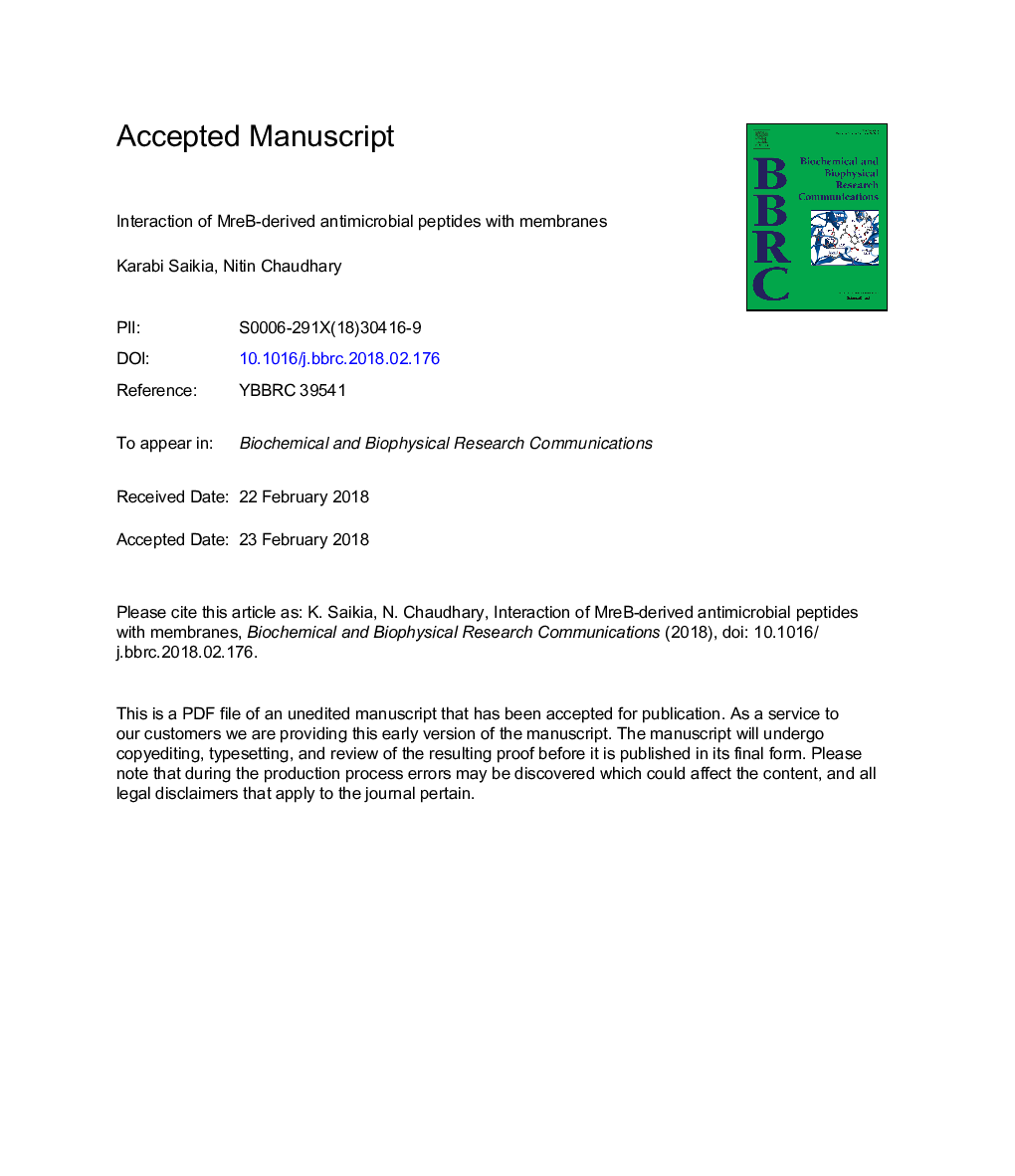| Article ID | Journal | Published Year | Pages | File Type |
|---|---|---|---|---|
| 8293690 | Biochemical and Biophysical Research Communications | 2018 | 22 Pages |
Abstract
Antimicrobial peptides are critical components of defense systems in living forms. The activity is conferred largely by the selective membrane-permeabilizing ability. In our earlier work, we derived potent antimicrobial peptides from the 9-residue long, N-terminal amphipathic helix of E. coli MreB protein. The peptides display broad-spectrum activity, killing not only Gram-positive and Gram-negative bacteria but opportunistic fungus, Candida albicans as well. These results proved that membrane-binding stretches of bacterial proteins could turn out to be self-harming when applied from outside. Here, we studied the membrane-binding and membrane-perturbing potential of these peptides. Steady-state tryptophan fluorescence studies with tryptophan extended peptides, WMreB1-9 and its N-terminal acetylated analog, Ac-WMreB1-9 show preferential binding to negatively-charged liposomes. Both the peptides cause permeabilization of E. coli inner and outer-membranes. Tryptophan-lacking peptides, though permeabilize the outer-membrane efficiently, little permeabilization of the inner-membrane is observed. These data attest membrane-destabilization as the mechanism of rapid bacterial killing. This study is expected to motivate the research in identifying microbes' self-sequences to combat them.
Related Topics
Life Sciences
Biochemistry, Genetics and Molecular Biology
Biochemistry
Authors
Karabi Saikia, Nitin Chaudhary,
